
The Present and Future for Implant World
• At this point in time, dental implants are
considered to be the most advanced solution
for missing teeth with a long-term success
rate of up to 97% in some dental practices.
• They are the only currently available solution
that can reliably support the surrounding
teeth and stimulate the natural formation of
bone. In doing so, they are able to restore an
individual’s smile and overall confidence.
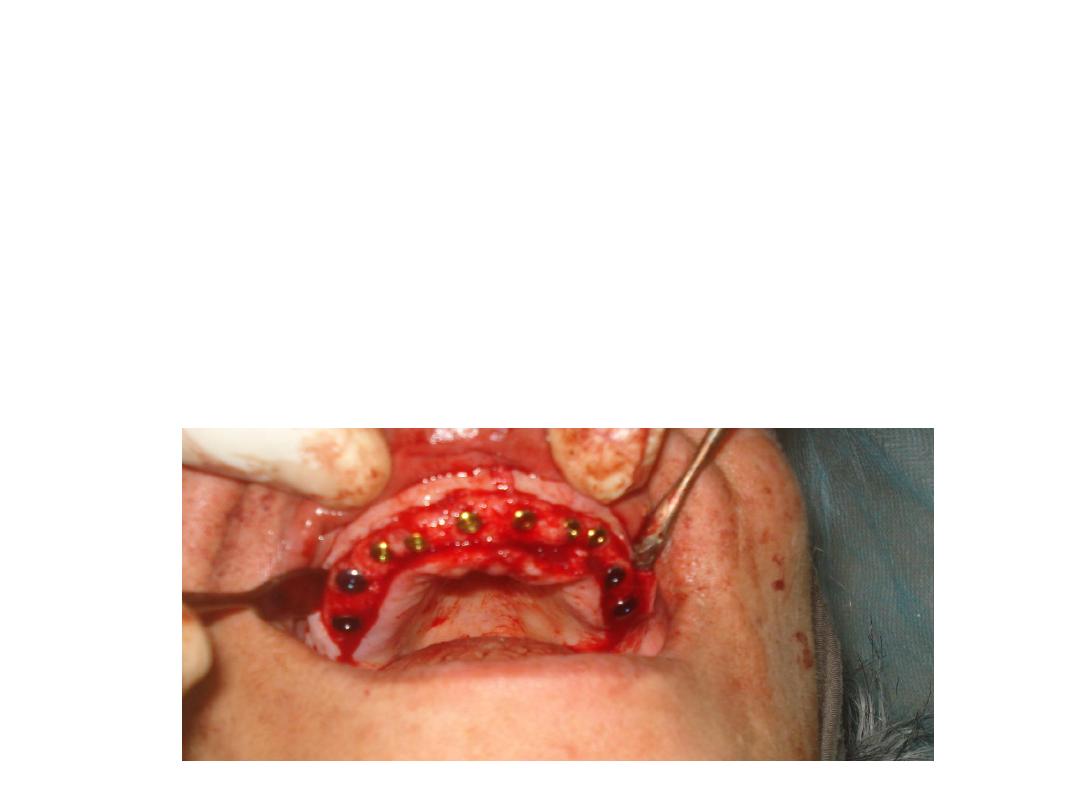
2
Classification of dental implant
1- According to the position of the implant in jaw bones
2- Based on the surface texture of the implant
3- Based on time of installation and time of loading
4- According to how the implant integrate/gain stability.
5- Based on number of pieces
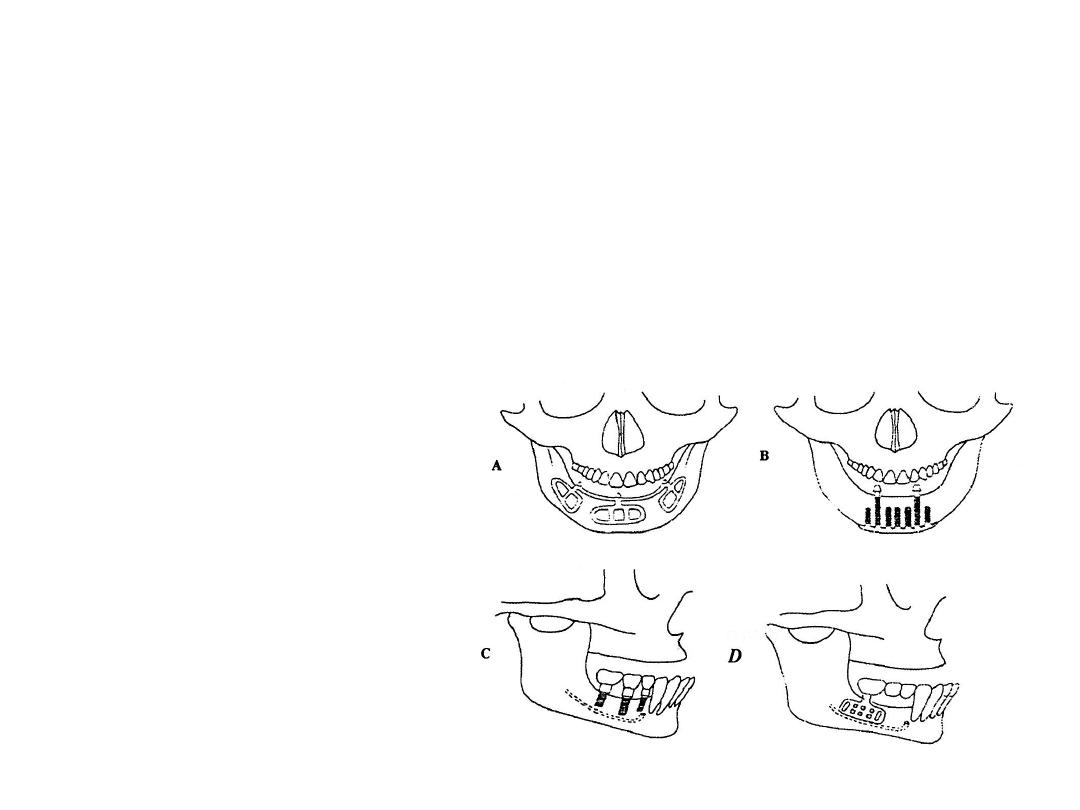
3
Classification of dental implant
1- According to the position of the implant in jaw bones:
Sub periosteal implants.
Transosteal implants.
Endosteal implants.
Endosteal implants can be
divided
into
root
form
(cylindrical and screw type
which is either solid or hallow,
conical or taper), blade form
and Fork shape (C and D)
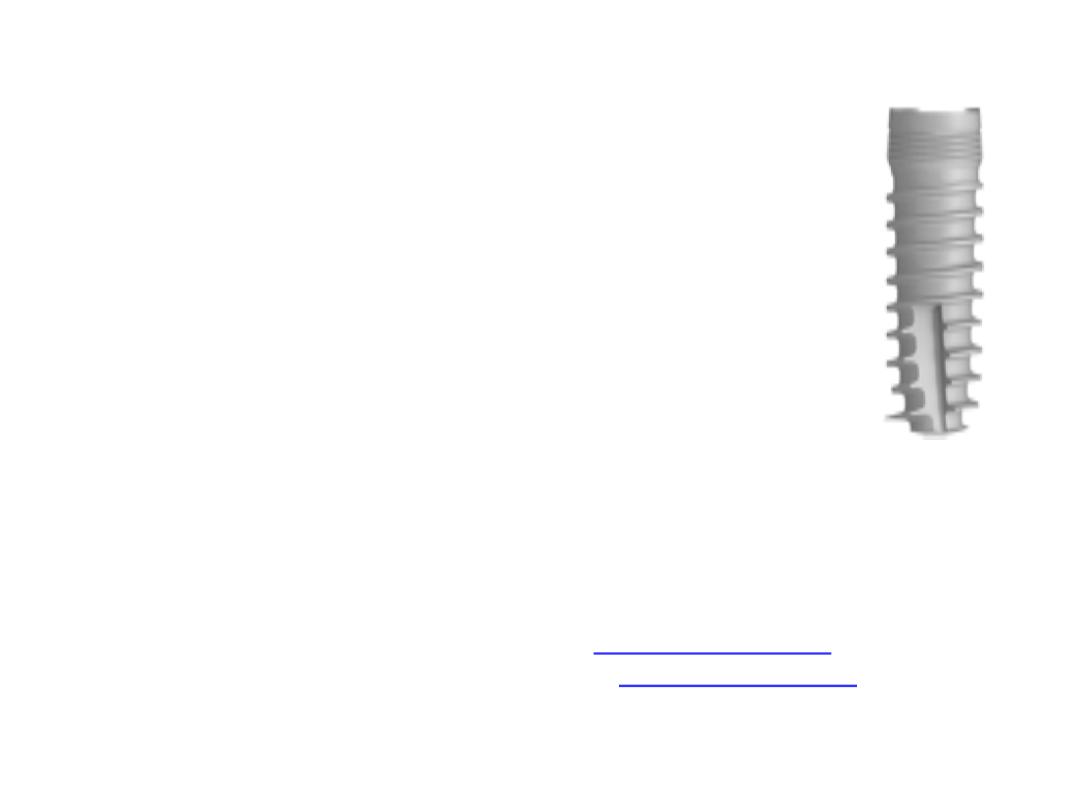
4
Classification of dental implant
2- Based on the surface texture of the implant:
-Surface with pure titanium
-Acid-etched surface
-Porous beaded surface
-Hydroxyapatite coated surface
3- Based on time of installation and time of loading
-Delayed installation after extraction + delayed loading.
-Delayed installation after extraction + immediate loading.
-Immediate installation after extraction + delayed loading.
-Immediate installation after extraction + immediate loading.
Important Note: Modern Implantology Focuses on
-Delayed installation after extraction +
immediate loading
.
-Immediate installation after extraction +
immediate loading
.
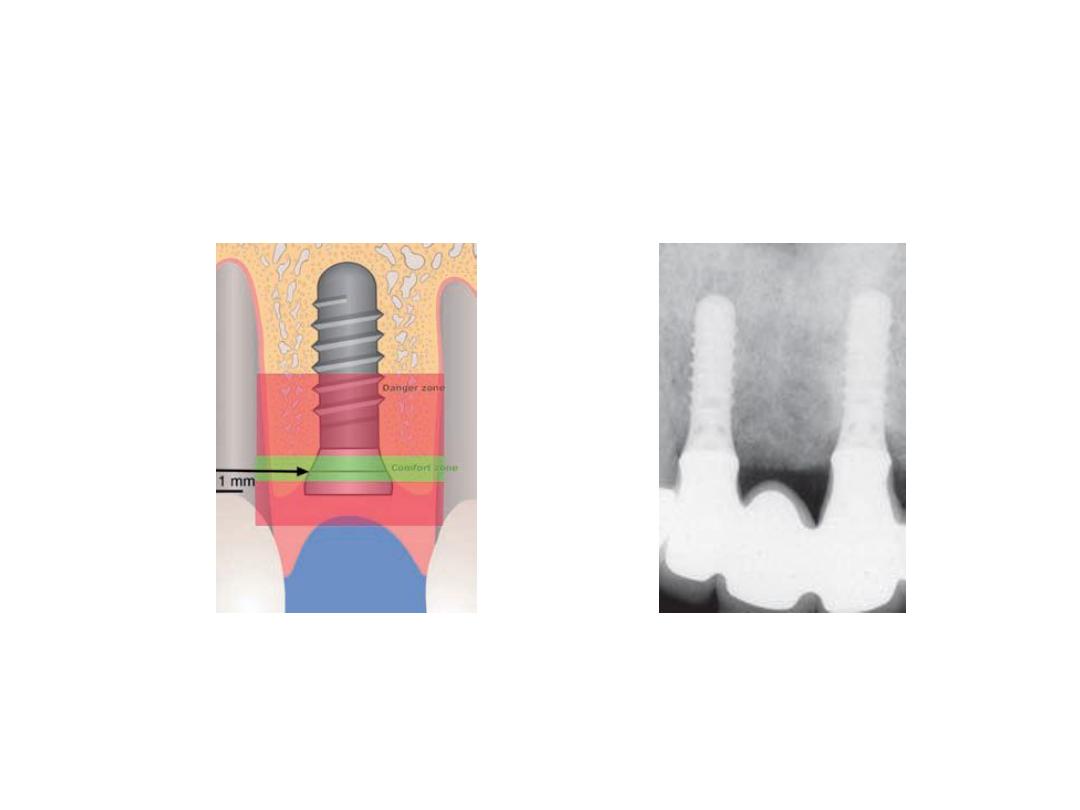
5
Classification of dental implant
4- According to how the implant integrate/gain stability.
A- Osseo-Integrated Dental Implants (Cylindrical implants depending on
"active biologic osseo-integration“)
Indications: Such implants may be used if
sufficient vertical and
horizontal bone is present
. These implants
require a "healing time" for
active biologic integration, before they can be loaded.
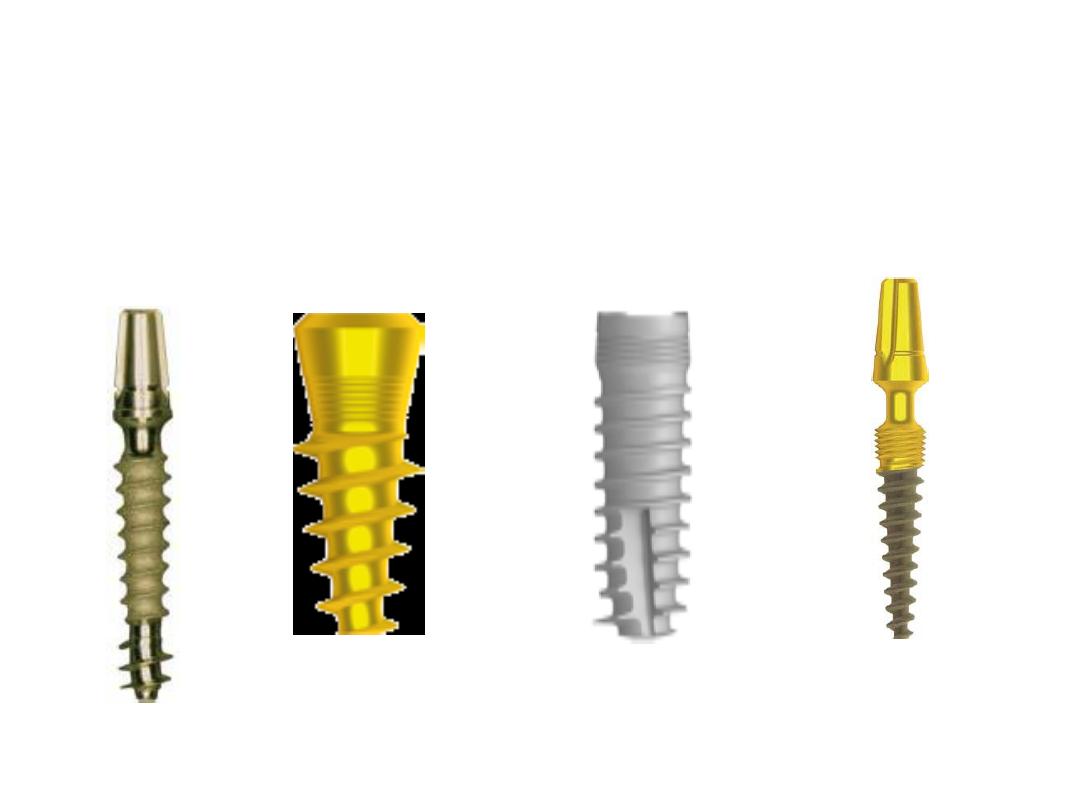
6
Classification of dental implant
4- According to how the implant integrate/gain stability.
B- Compressive Implants ( implants creating stability through
compression of spongeous bone)
Traditional
compression screw
implant with conical
core.
2-stage Compression screw
implant with polished surface.
2-stage
Compression screw
implant with rough
endosseous
surface.
Single-piece implant with rough
endosseous surface for
compression of spongeous
bone and polished surface for
positioning in the 1st cortical.
Indications: Such implants may be used if compressible spongeous bone
is present (Zarb & Lekholm/Misch Cl. 2 and 3)
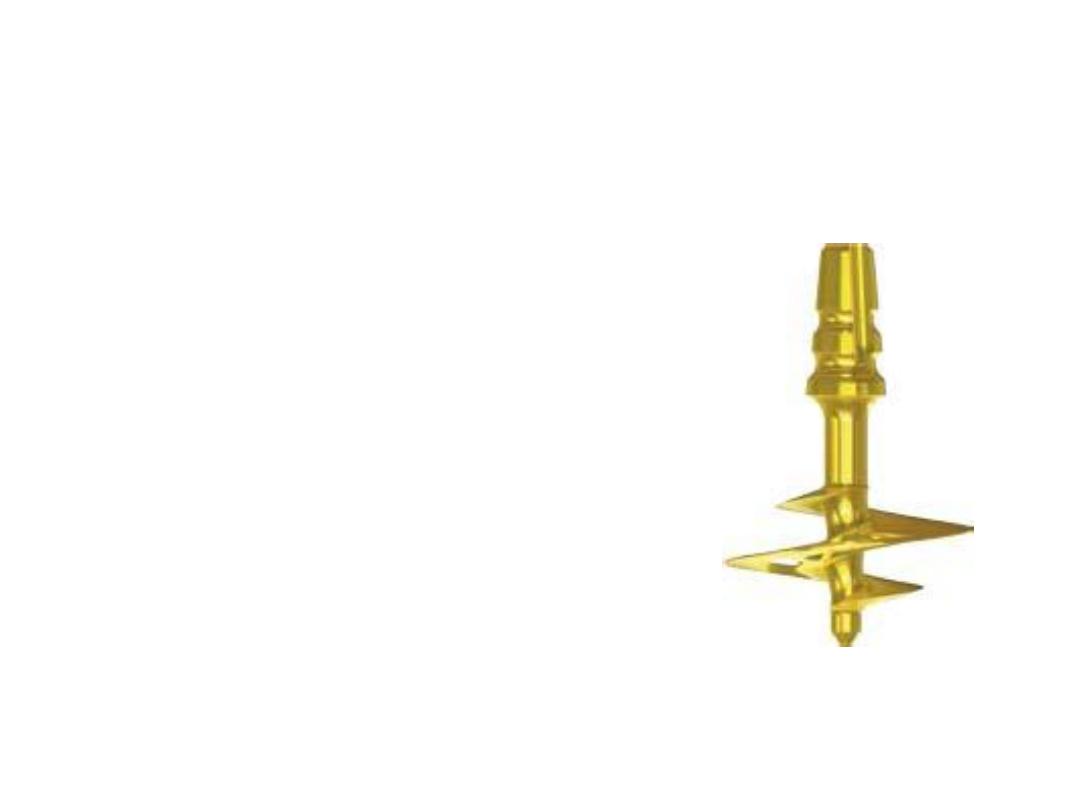
7
Classification of dental implant
4- According to how the implant integrate/gain stability.
C- Osseo- fixated Dental Implants (Implants utilizing cortical Osseo
fixation)
Bicortical screw implant
with self cutting apical
thread.
Such implant feature aggressive threads for
engagement in the 2
nd
or 3
rd
cortical.
The
whole implant is typically polished.
The larger
the thread diameter is, the more
compressive the threads act. Hence this
implant may be considered also to be a
compression screw.
Indications:
They may be placed into healed
bone areas or into fresh extraction sockets.
The amount of vertical bone available at the
implant site is of minor importance: 1 mm (e.g.
in extraction site of lower 2
nd
or 3
rd
molars)
can be enough.
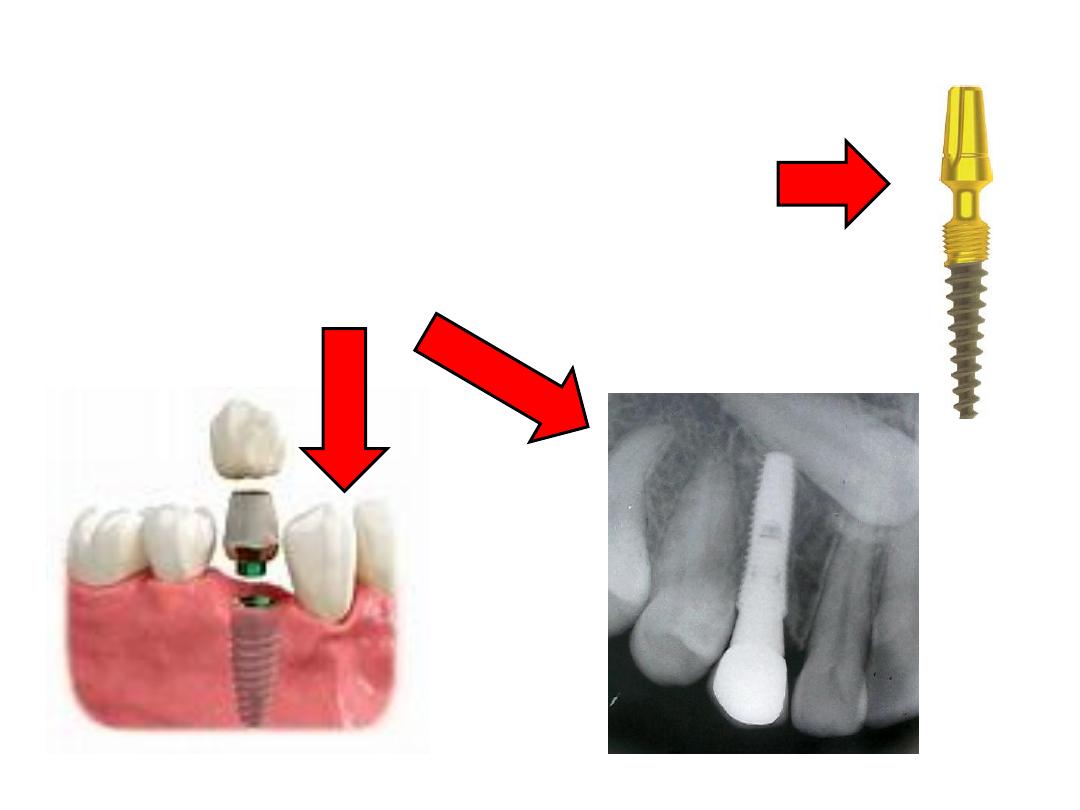
8
Classification of dental implant
5- Based on number of pieces:
A- One Piece Dental Implant - Affordable Implant
B- Two Pieces Dental Implant:
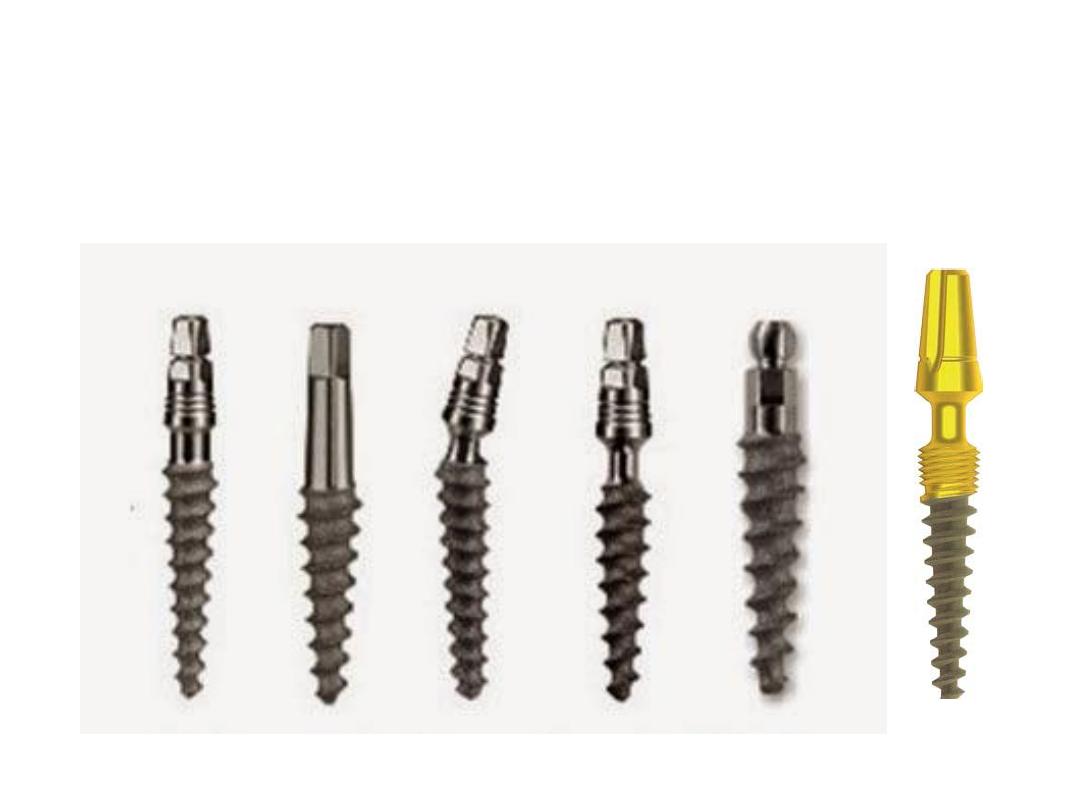
9
One piece implants are designed to give immediate teeth.
Almost all patients are eligible for these new generation
implants.
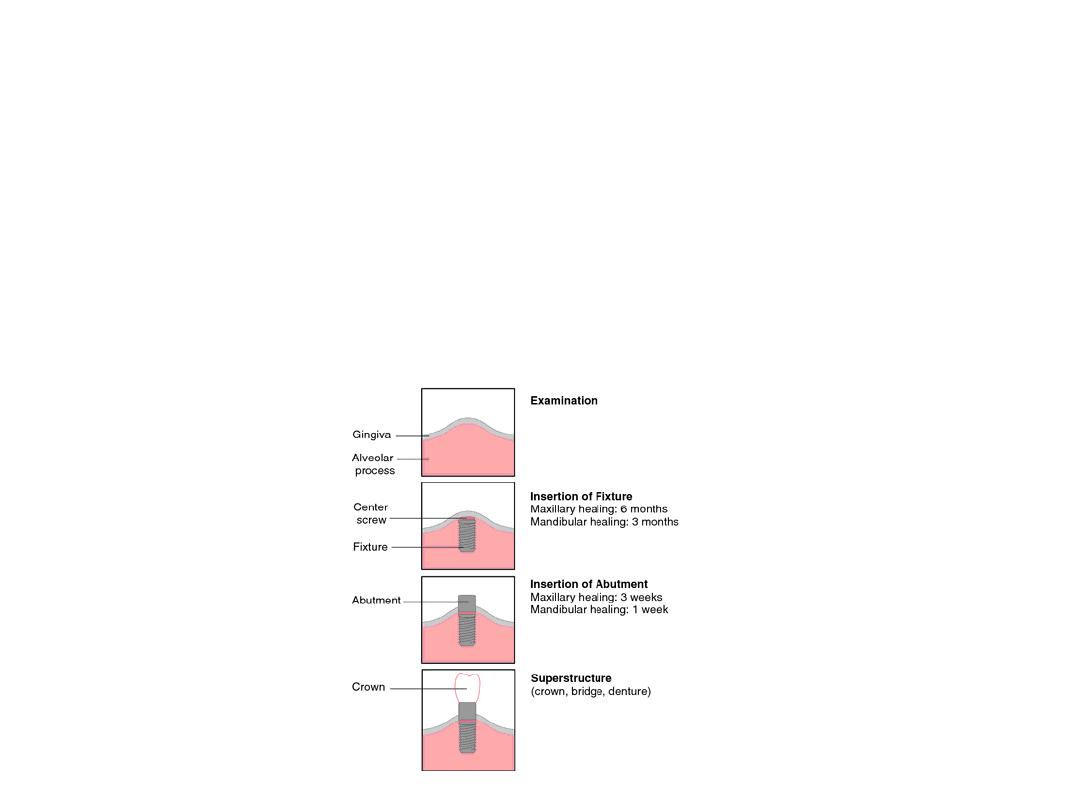
10
A traditional (Two Pieces) implant treatment involved multiple appointments with
treatment extending from 6 months to 1 year:
1)
Extraction of offending tooth, waiting 2–4 months for extraction socket to heal.
2)
Insertion of implant (first stage surgery), and again waiting for 3–6 months for
integration of implant with surrounding bone (Unloaded healing phase).
3)
Uncovering of implants (second stage surgery to expose the implant ), and
placement of a prosthetic abutment (gingival former), then waiting for 7-14 days
4)
Prosthetic phase.

Disadvantages of Two Stage Dental Implant
1) The financial investment is greater.(single
implant costs anywhere from $500-$6000)
2) Treatment can take up to 9 months
3) There is a risk of infection
4) An implant procedures may be challenging for
some patients.
5) Bruxism is a significant component of failed
implants.
6) Patient with certain medical complication
should not have implant
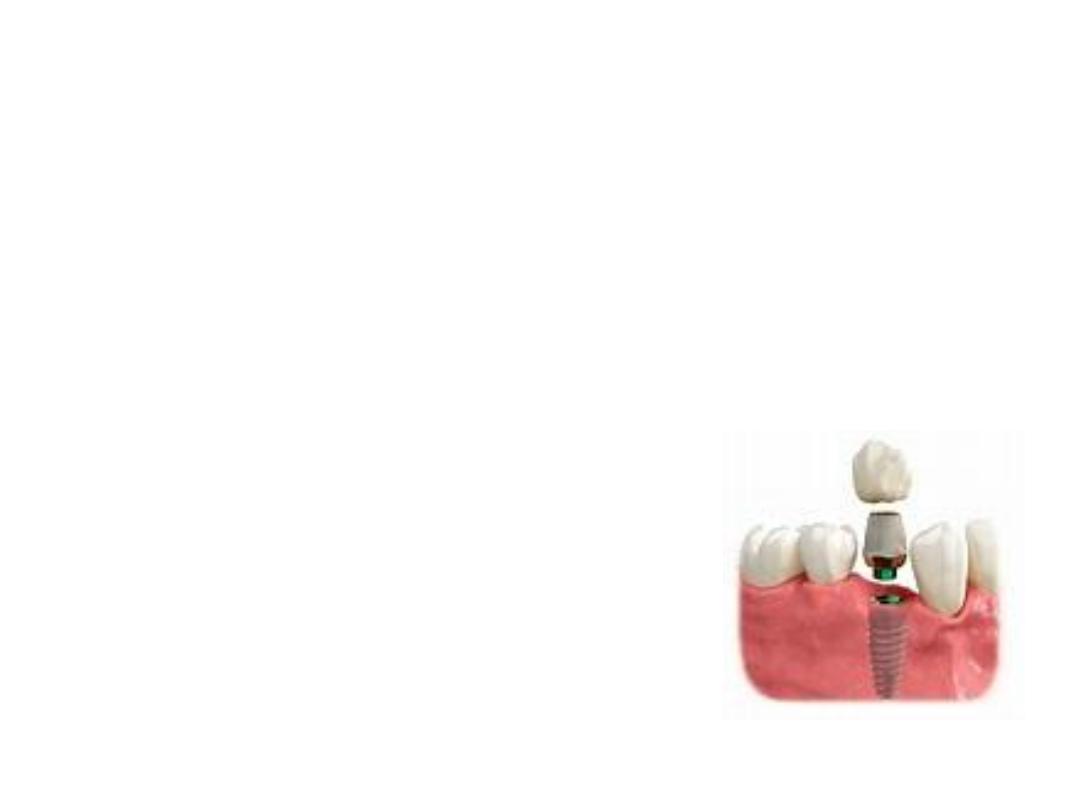
12
Conventional (Two Pieces) dental Implant with screw joining the implant and
abutment have many complications:
1)
The connecting screw is as thin as 2mm and its breakage is common.
2)
Loosening of the screw is common after several years and they have to be
periodically tightened.
3)
Because of the joint in between the implant and the abutment, there is leakage of
food debris causing bone loss. Thereby 2 piece implants are never given lifetime
warranty.
Because of these shortcomings related to
conventional
technique,
strategies
were
developed to substantially shorten the entire
treatment by placement of one piece dental
implant immediately after extraction of tooth
followed by immediate loading of implant with
prosthesis.
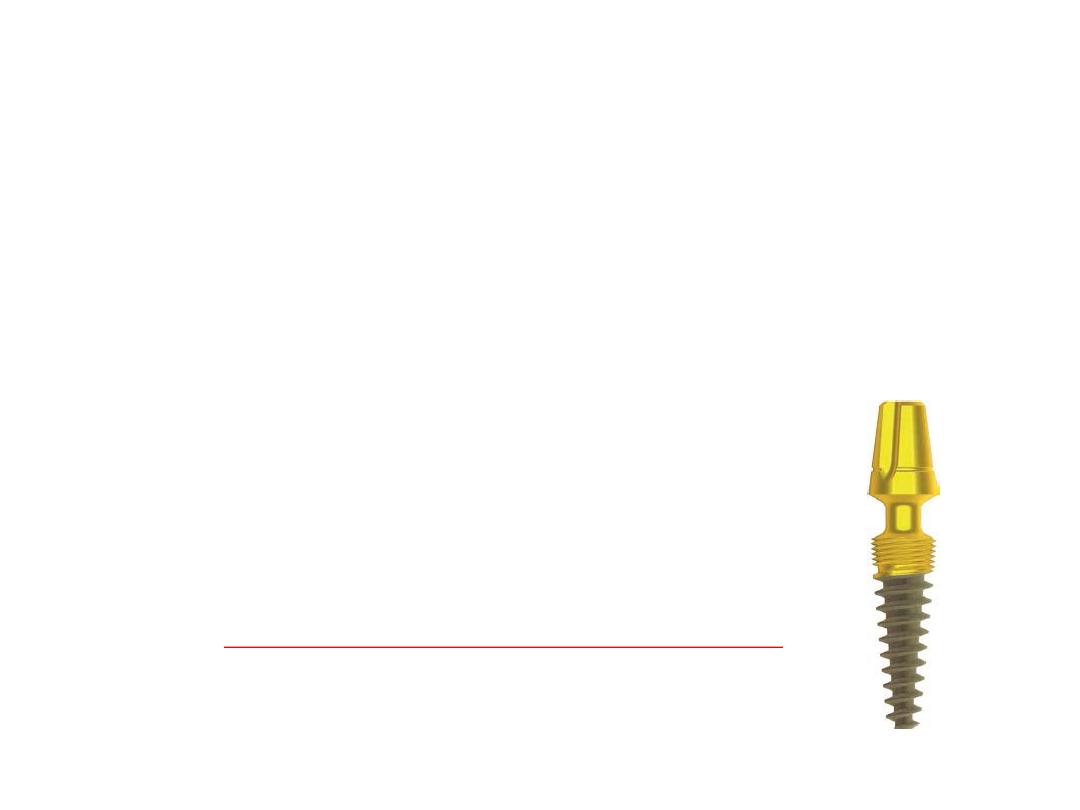
13
Advantages of Single piece Dental Implant:
1. A single trip of 3 days is enough for the replacement of teeth, and permanent
crown or bridge could be placed within 72 hours.
2. Affordable treatment because of the inexpensive dental implant.
3. Long term Durability of these implants because of their dependable solid structure
with no complications.
4. No swelling or bleeding, No suture as these are flapless.
5. Since there is no screw, no screw loosening or breakage is seen.
6. No crestal bone loss, which is commonly seen in 2 piece implants
7. The implantation procedure is quick and simple. There is no need to cut the gum.
8. Patients on
aspirin or heparin do not need to stop the medicines
.
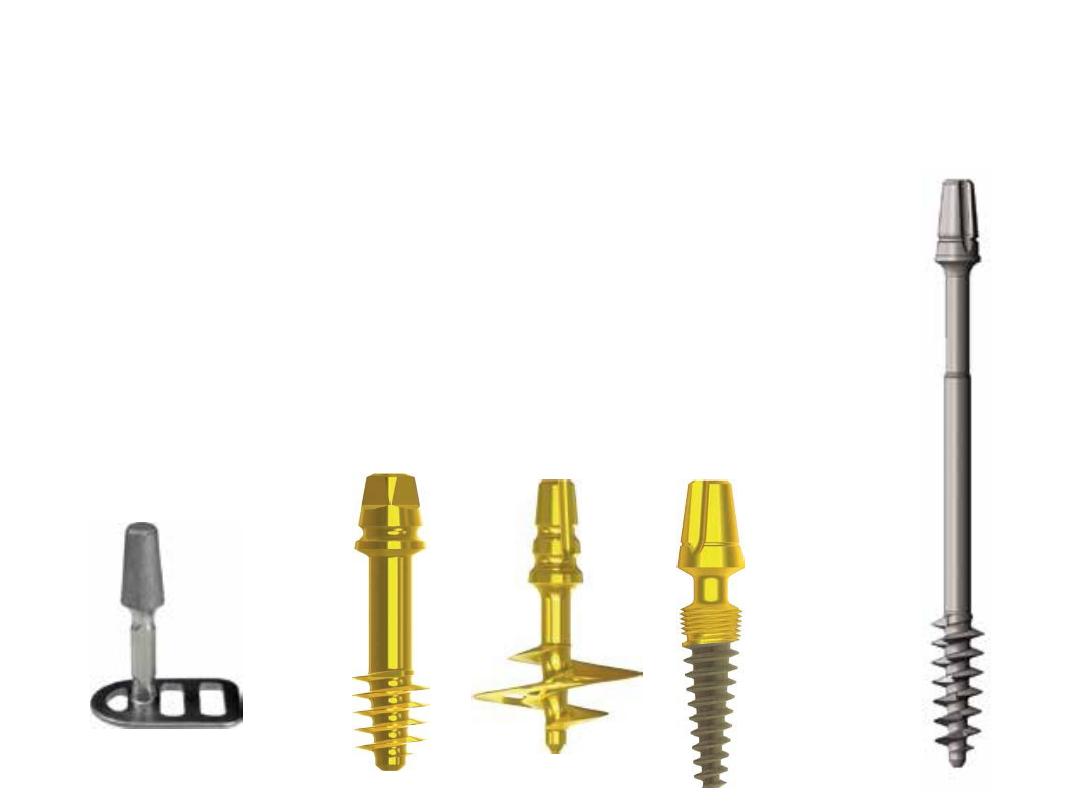
14
Strategic implant is a one piece endosseous dental implant
of special design, it belongs to the group of osseo-fixated
and osseo-integrating implants. It gives answers to
questions which have been bothering one for a long time,
namely
how to help patients with
atrophy of the jaws
, how
to treat cases with
periodontal involvement
or
diabetes
and how to do it simultaneously with the
removal of the
teeth, quickly, effectively and safely.
Strategic Implant
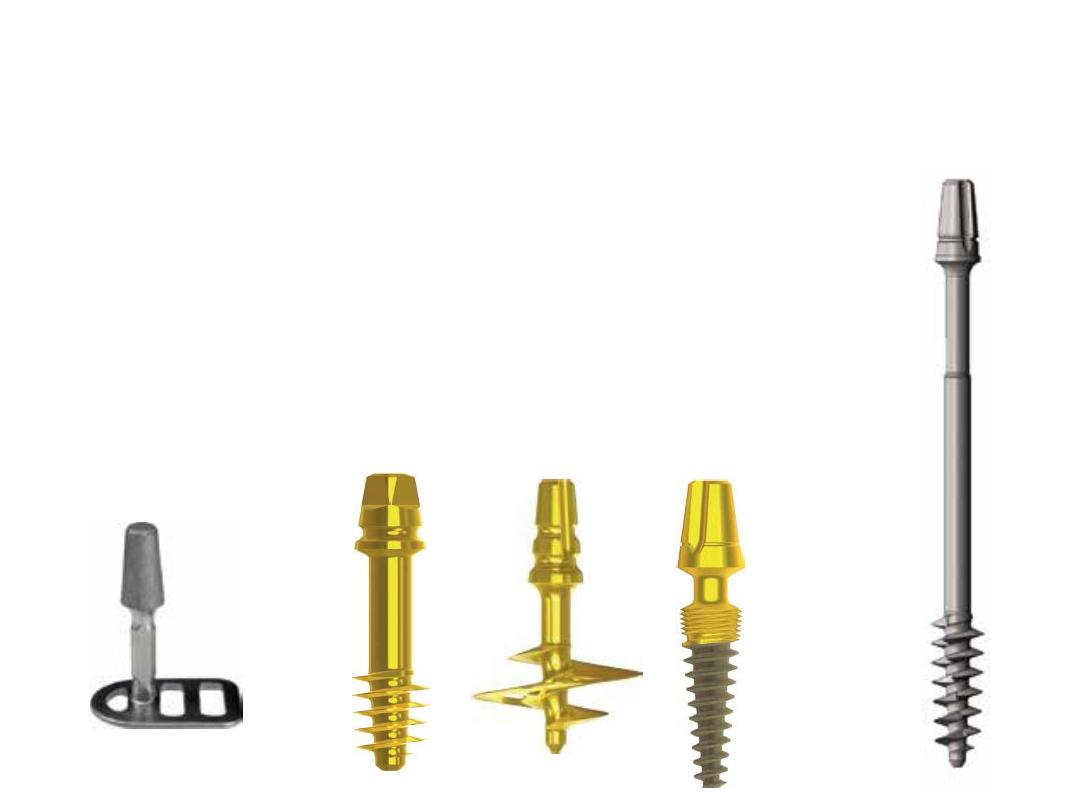
15
Before starting with strategic work, we had to refuse patients
because of contra-indications, or we have to prepare them for
implantation for a long time and to conduct costly operations and
bone augmentations. Strategic Implant found the alternative for
the most complex and untreatable cases. The scope of this
implantation technique is so wide and the technique is so
universal and efficient that it is at the moment the best
treatment option for all patients. It will offer patients the
teeth in three days, when all the other dentists have already
said that implantation in their cases is impossible?
Strategic Implant



